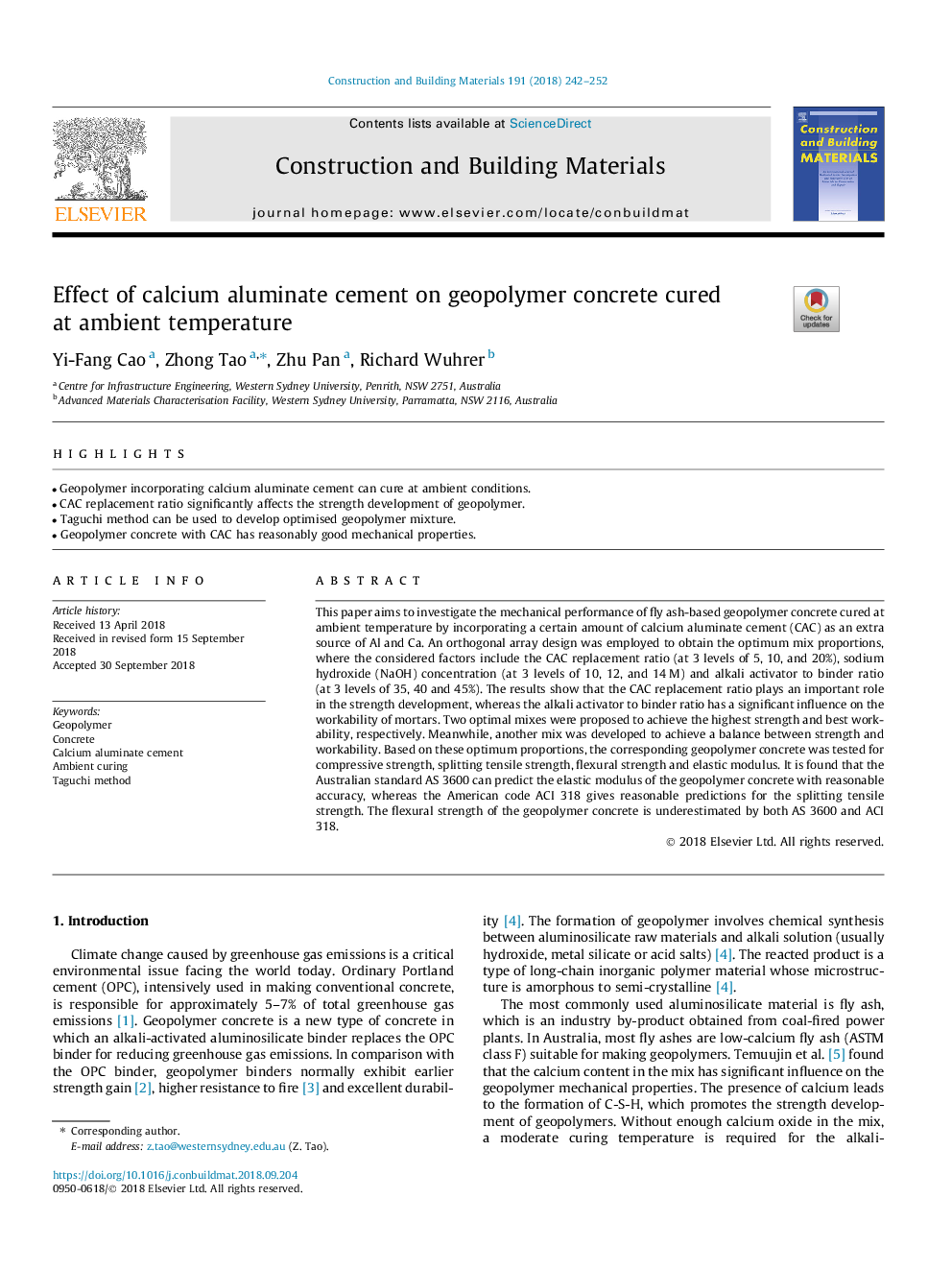| Article ID | Journal | Published Year | Pages | File Type |
|---|---|---|---|---|
| 11012626 | Construction and Building Materials | 2018 | 11 Pages |
Abstract
This paper aims to investigate the mechanical performance of fly ash-based geopolymer concrete cured at ambient temperature by incorporating a certain amount of calcium aluminate cement (CAC) as an extra source of Al and Ca. An orthogonal array design was employed to obtain the optimum mix proportions, where the considered factors include the CAC replacement ratio (at 3 levels of 5, 10, and 20%), sodium hydroxide (NaOH) concentration (at 3 levels of 10, 12, and 14â¯M) and alkali activator to binder ratio (at 3 levels of 35, 40 and 45%). The results show that the CAC replacement ratio plays an important role in the strength development, whereas the alkali activator to binder ratio has a significant influence on the workability of mortars. Two optimal mixes were proposed to achieve the highest strength and best workability, respectively. Meanwhile, another mix was developed to achieve a balance between strength and workability. Based on these optimum proportions, the corresponding geopolymer concrete was tested for compressive strength, splitting tensile strength, flexural strength and elastic modulus. It is found that the Australian standard AS 3600 can predict the elastic modulus of the geopolymer concrete with reasonable accuracy, whereas the American code ACI 318 gives reasonable predictions for the splitting tensile strength. The flexural strength of the geopolymer concrete is underestimated by both AS 3600 and ACI 318.
Related Topics
Physical Sciences and Engineering
Engineering
Civil and Structural Engineering
Authors
Yi-Fang Cao, Zhong Tao, Zhu Pan, Richard Wuhrer,
